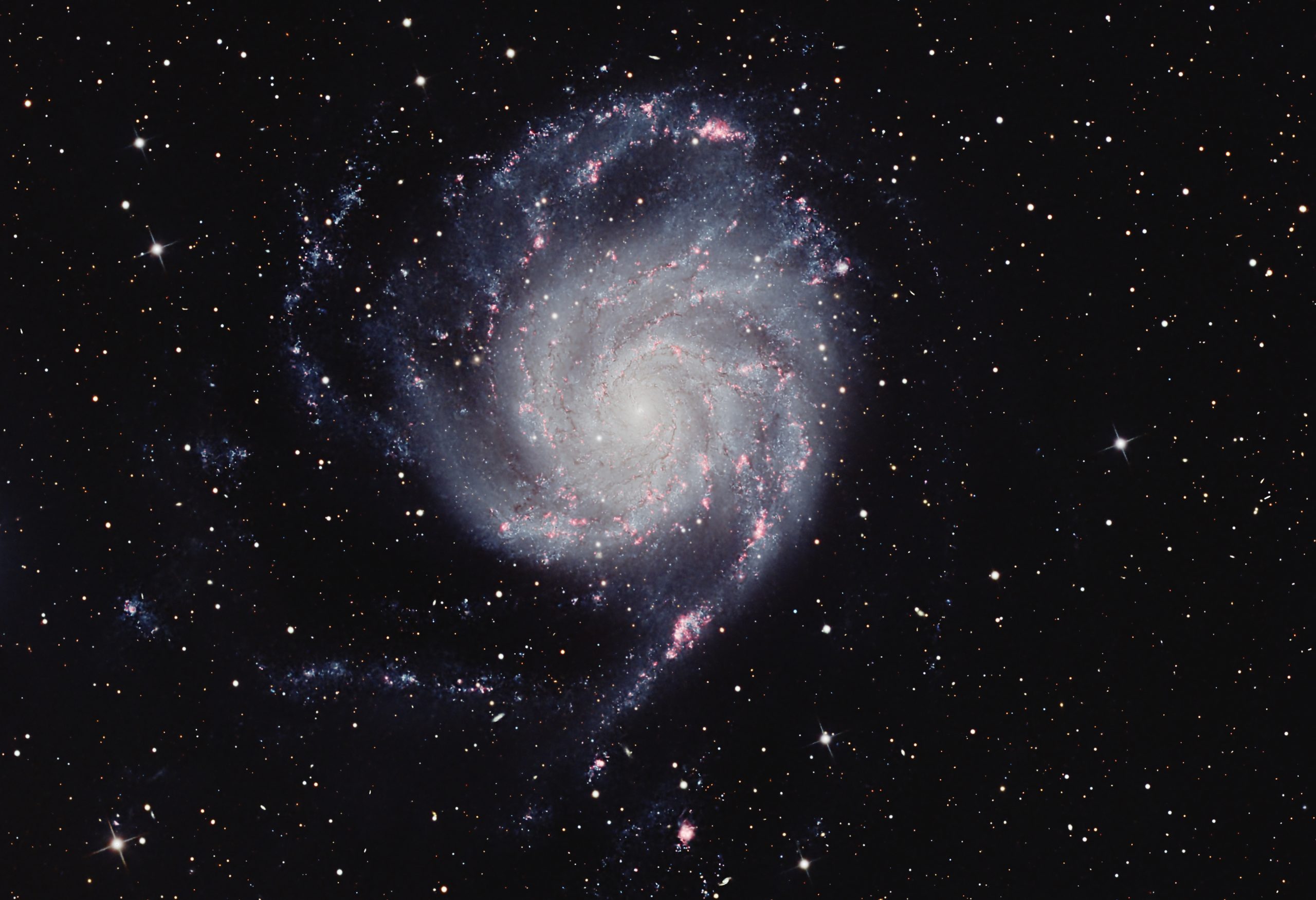M101 – The Pinwheel Galaxy

A beautiful face-on spiral galaxy, M101 is about 21 million light years away in Ursa Major. In fact it forms an equilateral triangle with two stars of The Plough, Alkaid and Mizar. Although the galaxy is well below naked eye visibility, binoculars will reveal it as a misty patch, depending on sky clarity and light pollution. Because of its relatively low surface brightness, a large amateur telescope is needed to clearly see the spiral structure visually.
The galaxy itself is about 170,000 light years across – almost twice the size of the Milky Way.
Originally targeted with my previous CCD camera, this version uses newly acquired data in 2025 with my current CMOS detector. There have been some significant advances in PixInsight’s tools over the intervening period, and probably an improvement in the skill of the author. For example, I would now say the H-II regions were a little overdone in the original image (which appears below).
M101’s numerous H-II regions can be seen glowing with the red light of the H-α spectral line at 656.3 nm. The neutral hydrogen has been ionized by radiation from nearby hot young blue stars in the spiral arms.
Equipment: Planewave CDK 14″ reflector on 10Micron GM2000 mount. ZWO ASI6200 CMOS camera with Astrodon RGB and Hα filters.
Exposure times: Red 6 hrs, Green 5 hrs, Blue 5 hrs, Hα 5.5 hrs.
Data acquired with ACP Expert/Maxim DL and processed in PixInsight.

This is the first version I published of this object, with data acquired in 2022 with the CCD camera below.
Equipment: Planewave CDK 14″ reflector on 10Micron GM2000 mount. FLI Proline P09000 CCD camera with Astrodon LRGB and Hα filters.
Exposure times: Lum 12 hrs, R 11 hrs, G 11 hrs, B 10 hrs, Hα 16 hrs.
Data acquired with ACP Expert/Maxim DL and processed in PixInsight.


0 Comments